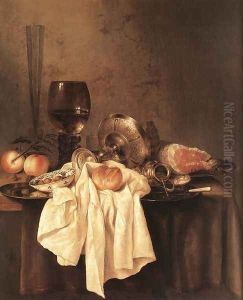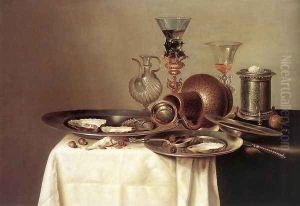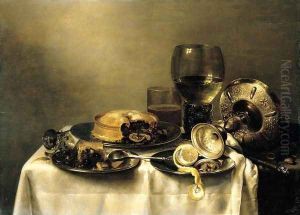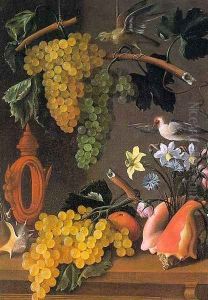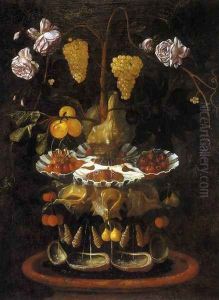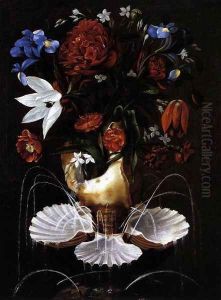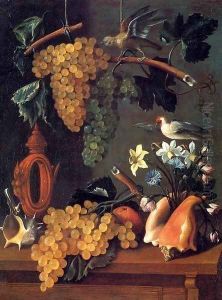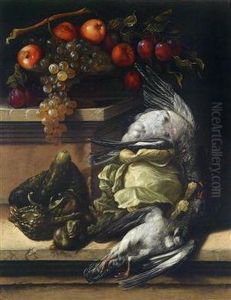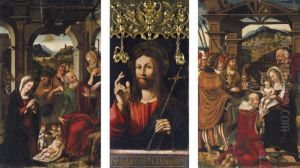Juan De Espinosa Paintings
Juan de Espinosa was a Spanish Baroque era painter, whose life details are not well-documented, leading to a certain degree of obscurity regarding his biography. Despite the lack of personal information, his work has been recognized for its quality and contribution to Spanish still life painting, known as 'bodegón'.
Espinosa's active period is primarily documented through his paintings, which suggest he was active during the first half of the 17th century. Most of his known works are dated between 1610 and 1640. His work is characterized by detailed and realistic depictions of fruits and flowers, often arranged in intricate compositions.
Juan de Espinosa's paintings show a remarkable understanding of texture and light, with a strong influence from earlier still life painters like Juan Sánchez Cotán and Juan van der Hamen. Some of Espinosa's pieces also reflect the influence of Italian and Flemish painting traditions, which were prevalent in Spain during the period due to the Habsburg's connections across Europe.
His works are considered part of the 'Golden Age' of Spanish art, a period that produced other great masters like Diego Velázquez and Francisco de Zurbarán. Unfortunately, like many artists of his time, Espinosa did not achieve widespread fame during his lifetime, and his works were often attributed to other artists. It was not until later scholarly work that his contributions were more fully recognized and appreciated.
Though the exact details of his death remain unclear, Juan de Espinosa is believed to have died around 1641. His works can be found in various museums and collections, appreciated for their beauty and historical value in the context of Spanish art history.
